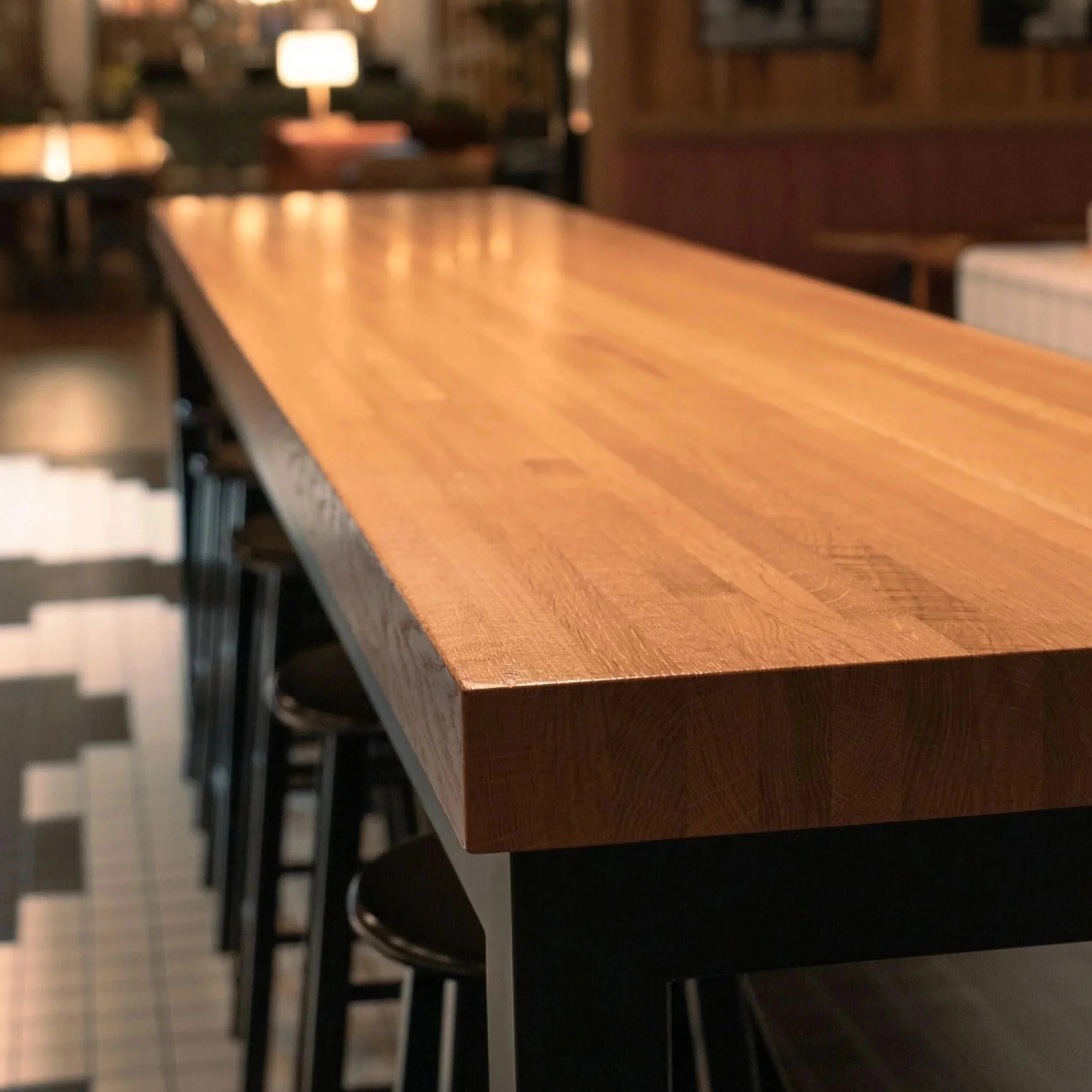Why Wood Surfaces are Outperforming Stone Today
How domestic hardwood outperforms stone in warmth, value, and longevity.
In a world overflowing with surface options, it’s easy to assume that “solid surface” automatically means strength and longevity. But that’s not the whole story. Natural wood delivers warmth, resilience, and lasting value that many composite or stone materials can’t match; and with the rising cost of natural stones, quartz, and quartzite, designers are taking another look at wood for good reason.
The Beauty and Value of Real Wood
Wood offers something no engineered surface can: a connection to nature and craftsmanship. Its warmth softens a space, its texture invites touch, and its character deepens over time. Unlike solid surfaces that remain unchanged, wood evolves, developing a patina that reflects the life of the space around it.
High-quality hardwood furniture also provides exceptional long-term value. While stone and quartz may look pristine when new, wood carries a natural warmth and versatility that only improves with age. Solid hardwood pieces can be refinished, repaired, or reworked, extending their lifespan far beyond that of a fixed solid-surface installation.
Material Cost Comparison: Wood vs. Quartz
Price is only part of the story, but it matters. Stone and quartz surfaces often exceed $150 per square foot, while high-quality hardwood surfaces such as ash and maple average about $65 per square foot.
When you pair those savings with the ability to customize shape, finish, and size without major cost increases, wood quickly becomes the more adaptable and economical choice.
Predictability in an Unpredictable Market
The solid surface market continues to experience volatility influenced by mining costs, shipping delays, and global demand. Tariffs, import regulations, and inconsistent quality control all contribute to cost and scheduling uncertainty.
By contrast, domestic wood offers transparency and control.
• Local supply chains reduce risk and ensure consistent material quality.
• Direct sourcing eliminates import markups and freight surcharges.
• Stable pricing protects project budgets and delivery schedules.
• Sustainable forestry practices lower environmental impact and support responsible production.
With wood, reliability and accountability are inherent to the process.
Durability, Repairability, and Long-Term Strength
Stone may resist scratches or heat, but once it is damaged, repairs are often costly and visible. Wood is resilient by nature. It can be sanded, refinished, or restored to its original beauty. Over time, this flexibility results in longer lifespans and less material waste.
A well-crafted hardwood table or countertop can serve through multiple projects and spaces, growing more beautiful with each refinishing.
Why This Matters for Designers and Developers
For hospitality, workplace, and high-end interiors, material choices reflect a brand’s priorities. Choosing domestic hardwood means choosing:
• Pricing and production stability
• Reliable lead times and delivery
• Sustainable sourcing and manufacturing
• A timeless, natural aesthetic that endures
The Smarter, More Sustainable Choice
Solid surfaces have their place, but when it comes to custom furniture, domestically sourced hardwood offers more stability, control, and long-term value. Building locally with local materials provides cost consistency, dependable scheduling, and reduced environmental impact.
In an age of fast trends and fluctuating markets, wood endures—reliable, adaptable, and resilient. Domestic hardwood brings a rare balance of beauty and responsibility, offering both practical stability and emotional warmth. Its surface tells a story of craft and continuity, growing richer over time. For designers and builders seeking materials that last in form, function, and feeling, wood remains the natural choice that never loses relevance.






